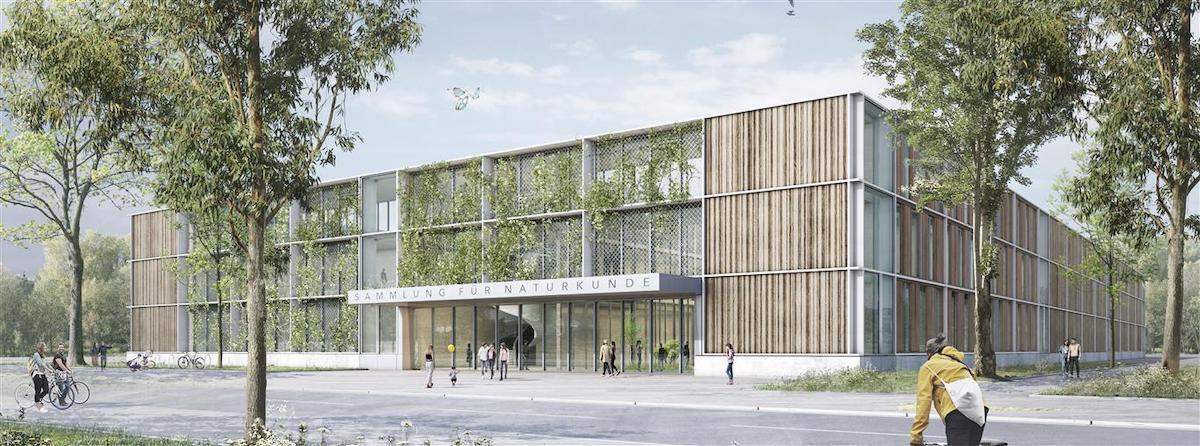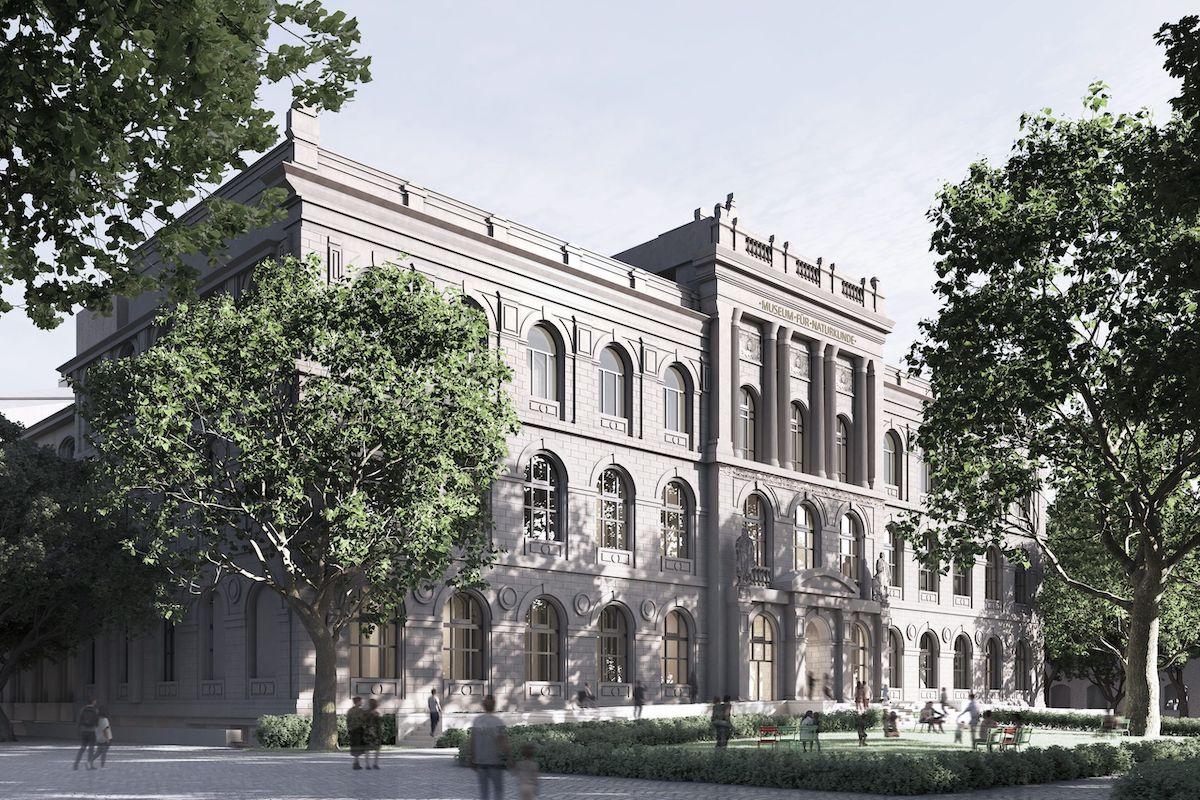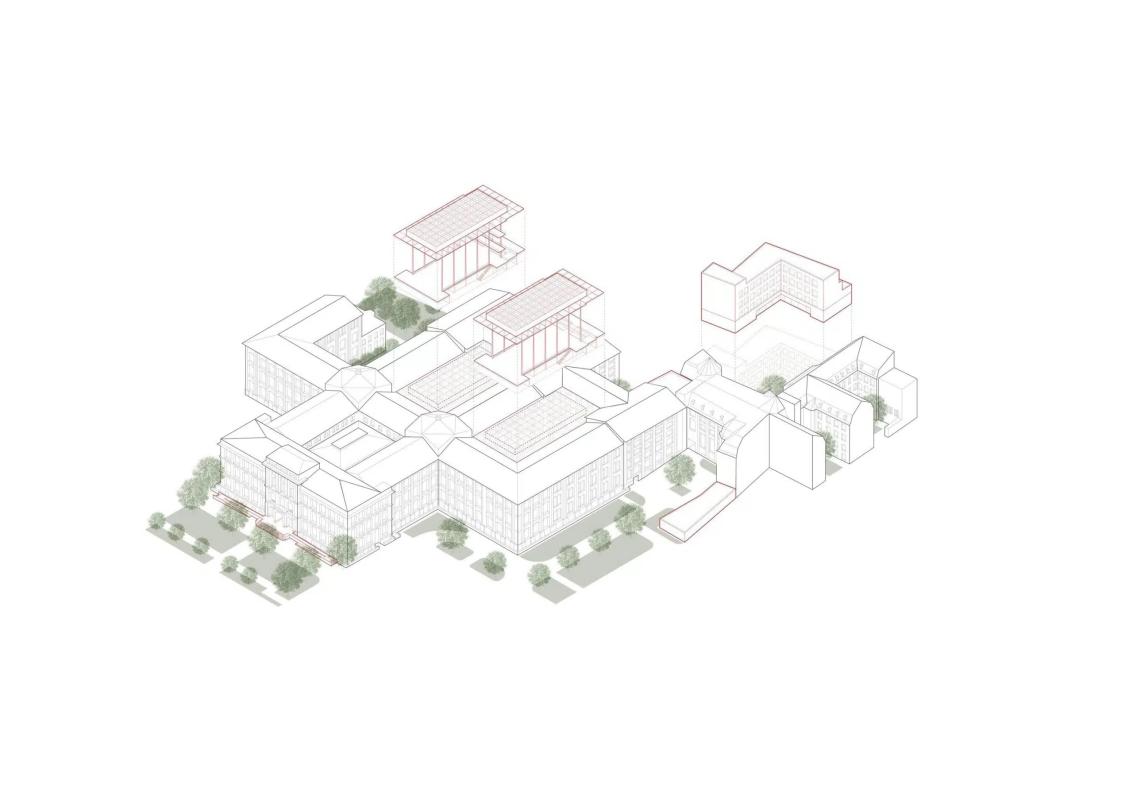A house for nature and society
"For us, it's about being a place for encounters, dialogue and democracy. Constant change is part of our DNA. We are the museum of the future." – Prof. Johannes Vogel, PhD, Director General
Since the opening of the Museum für Naturkunde Berlin in 1889, the museum has survived four states – two world wars – and has always remained one thing: a leading research institute. But almost 80 years after the end of the war, two-thirds of the building is still in ruins. Now the historic building is being transformed into a 21st century museum that opens its collection to the world: a place of research and preservation, of encounters and democracy.

A plan for the future
The Future Plan, which the museum implements on a daily basis, provides for the structural refurbishment of the museum, and the museum's scientific collection of around 30 million objects are to be catalogued and become better accessible. The museum is developing into a place of dialogue about the future of our planet, which communicates and creates knowledge in new ways – together with society. A total of 660 million euros has been pledged to the museum for this purpose by the federal government and the state of Berlin.
- YouTube tour about the Future Plan with Stephan Junker, Managing Director
- Faces behind the Future Plan
- Interview with Heiko Rund, Overall Project Lead "Future Plan"
Structural realisation of the Future Plan
"One challenge is to bring the museum into the 21st century. This also includes to ensure that it is inclusive. We have high technical standards, which we want to realise without destroying the monument itself or the sight of the monument." – Selina Schultze, Head of Construction Management and Lead "Construction" sub-project as part of the Future Plan
294 million euros have been earmarked for the conversion of the historic building on Invalidenstrasse in order to create high-quality spaces for cutting-edge research, an accessible collection and knowledge exchange on the 30,000 square metres that have not yet been renovated. The winning design by gmp International GmbH, which emerged from an international architectural competition, gives the museum a new centre, among other things. The current dinosaur hall will become a place of welcome and exchange, from which barrier-free tours of the exhibitions will start. The second courtyard behind the dinosaur hall will be roofed over and become the central exhibition hall. In this way, the museum aims to create a positive visitor experience that communicates research and the collection in an understandable way and inspires new ideas for living together on a healthy planet.
- YouTube video about the architecture competition
- Interview with Selina Schultze, Lead "Construction" sub-project
Developing the collection into the future
"The greatest demand placed on us is to open up and enable much more participation." – Dr. Jana Hoffmann, Head of the "Collection future" science programme and Lead "Collection discovery and development" sub-project as part of the Future Plan
With the implementation of the Future Plan, there is a unique opportunity to open up the collection, i.e. to secure it for future generations in terms of conservation, to digitalise it and to make it accessible for innovative applications. The aim is to develop the collection into an open, digital-analogue knowledge infrastructure – with the aim of creating and networking knowledge that can meet future scientific, social and technological requirements.
- Interview with Dr. Jana Hoffmann, Lead "Collection discovery and development" sub-project
- YouTube video "How to digitize natural heritage"

Creating and sharing knowledge collaboratively
"The Institutional Strategy enables us to open up the museum even further - we invite the public, politicians and businesses to utilise the museum's treasures, our knowledge and expertise and our research." – Dr. Susanne Hecker, Head of the "Society and Nature" science programme and leading the "Knowledge transfer" sub-project as part of the Future Plan
The aim is to further develop the Museum für Naturkunde and its exhibition into a living place of knowledge and an open information infrastructure that makes the museum's collection and research accessible and tangible. This also includes innovative collaborations between the museum and other partners to develop pioneering formats for interdisciplinary and participatory science. Against the backdrop of global challenges with ecological, social and democratic dimensions, it is essential to use the means of knowledge transfer and exchange to provide well-founded and multi-faceted knowledge and thereby promote social debates on the relationship between humans and nature on the basis of scientific expertise.
One museum, two locations
"Now we can finally renovate the entire building in order to develop into an open and integrative research museum in the middle of the city" – Stephan Junker, Managing Director
"We will open up and research our extensive collection in Adlershof." – Stephan Junker, Managing Director
In order to be able to implement all projects of the Future Plan, an additional, second location will be built in Berlin-Adlershof: for excellent science and collection development, with a modern collection infrastructure, laboratories for collection care and collection-related science, (semi-) automatic digitisation and development systems as well as equipment for imaging processes. The methods, techniques and products developed will also be available as a service for a wide range of users. Objects, digitised material and the knowledge they contain will become inspiration for co-productions and innovations - also thanks to the proximity to high-tech companies and start-ups at the Adlershof site.
The new location will be a collection research centre and development centre for technologies in the areas of conservation research, collection processing, conservation-restoration processing and modern collection use. Digital collection cataloguing and conservation processing are offered as a service - also commercially - for valuable natural history and cultural history collection objects in need of restoration. A milestone for national and international co-operation!

Creating a visible and tangible path for the future
"We are making the museum's development into the future transparent and tangible. The public can actively help shape the museum in various formats." – Stefanie Krzyzniewski, Head of Public Relations
In the biannual "for Nature" journals you can find out how the Museum für Naturkunde Berlin is making itself fit for the future. The journals are enclosed with the daily newspaper DER TAGESSPIEGEL and are on public display in the museum. Most of its content stories are also available in English on the website.
The YouTube series "Museum Evolution" provides insights into processes that take place behind the scenes. For example, a camera accompanies construction work, watches snails being digitised or exhibitions being set up.





